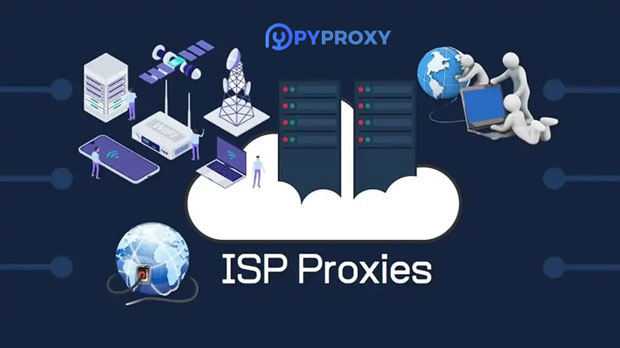Both Reverse Proxy and socks5 proxy are crucial networking technologies that are used to enhance privacy, security, and performance in different contexts. However, they serve distinct purposes and function in fundamentally different ways. A Reverse Proxy acts as an intermediary server that forwards client requests to another server, often used for load balancing, security enhancement, and caching. In contrast, a Socks5 Proxy is a protocol that allows users to route their internet traffic through a remote server to mask their real IP address, often used to bypass geo-restrictions or improve anonymity. Understanding these differences is essential for selecting the right solution based on the use case. Introduction to Reverse Proxy and Socks5 ProxyWhen discussing network proxies, the terms "Reverse Proxy" and "Socks5 Proxy" frequently come up. These two concepts, while related to internet traffic management, serve vastly different roles. While a Reverse Proxy primarily manages incoming traffic to enhance security and performance, a Socks5 Proxy focuses on routing traffic for anonymity and bypassing restrictions. Both offer essential benefits, but understanding their core differences is key to leveraging them effectively. This article will delve into the fundamental differences between the two, exploring their features, use cases, advantages, and disadvantages to help businesses and individuals make informed decisions about their network setups.Understanding Reverse ProxyA Reverse Proxy acts as an intermediary server that sits between client requests and the backend server. Instead of directly connecting to the server, clients send their requests to the Reverse Proxy, which forwards the requests to the actual server. The server’s response is then sent back through the Reverse Proxy to the client.One of the key roles of a Reverse Proxy is to distribute the incoming client traffic across multiple servers in a method known as load balancing. This helps ensure that no single server becomes overwhelmed with too many requests, improving both reliability and performance. Reverse proxies can also provide additional layers of security, hiding the identity and internal structure of the backend servers from the public.Other functionalities of a Reverse Proxy include caching, SSL termination, and traffic encryption. Caching stores frequently requested content, reducing the load on backend servers and improving the speed of content delivery. SSL termination ensures that all secure communications are encrypted and decrypted at the Reverse Proxy level, offloading the computational burden from the backend servers.What Is Socks5 Proxy?A Socks5 Proxy is a protocol used for routing network traffic through an intermediary server to maintain privacy and bypass internet restrictions. Unlike Reverse Proxy, which handles incoming traffic for a specific set of servers, a Socks5 Proxy typically works on a per-user basis. It operates at a lower level of the internet protocol stack and does not modify the content or headers of the request. Instead, it simply forwards traffic from the user’s device to the destination server, masking the user’s original IP address.The main advantage of Socks5 Proxy is its ability to conceal the user’s identity, offering a higher level of anonymity. This makes it particularly useful for individuals seeking to access region-restricted content, or for those who want to keep their online activities private.Another notable feature of Socks5 is its support for a wide range of protocols, including TCP, UDP, and ICMP. This versatility makes it suitable for various applications, from simple web browsing to more complex activities like P2P file sharing or online gaming.Key Differences Between Reverse Proxy and Socks5 Proxy1. Purpose and FunctionalityThe most notable difference between Reverse Proxy and Socks5 Proxy lies in their purpose. A Reverse Proxy is designed to manage traffic to and from a web server or servers, optimizing performance, security, and load balancing. Its primary role is to act as a gatekeeper between clients and backend servers.On the other hand, a Socks5 Proxy is more user-centric. It is designed to anonymize internet traffic and facilitate access to restricted content. It routes traffic on behalf of the user, making it appear as though the request is coming from the socks5 proxy server, not the user's device.2. Use CasesReverse Proxy is commonly used in enterprise environments where there is a need to manage large volumes of traffic efficiently. It’s beneficial for load balancing in high-traffic websites, enhancing security by hiding server information, caching data to reduce server load, and managing SSL encryption for secure communications.Socks5 Proxy, in contrast, is more frequently used by individuals or organizations that require a high degree of anonymity. This includes accessing region-restricted websites, avoiding censorship, and hiding one’s IP address while browsing or engaging in online activities. It is also widely used for circumventing geo-blocked content on streaming services and for conducting secure, private browsing.3. Security ImplicationsFrom a security standpoint, a Reverse Proxy provides significant benefits. It can obscure the identity and structure of the backend servers, thus protecting them from direct attacks. Reverse Proxies can also filter out malicious traffic, acting as a first line of defense against DDoS attacks and other cybersecurity threats.Socks5 Proxy, while useful for enhancing privacy, does not inherently provide the same level of security. It focuses more on user anonymity and can be a useful tool for masking IP addresses. However, it does not include advanced security features like filtering malicious traffic or load balancing, which makes it more suitable for individual privacy needs rather than large-scale security management.4. Performance and EfficiencyIn terms of performance, Reverse Proxies are optimized to improve the efficiency of web servers. They achieve this through load balancing, caching, and SSL offloading, all of which help reduce server strain and improve the response time for clients. Reverse Proxies also contribute to more stable and faster website performance by distributing traffic intelligently. sock s5 proxies, while effective for anonymous browsing, do not have the same performance optimization features. They do not manage traffic at the scale or with the efficiency of a Reverse Proxy. Instead, their primary function is to route traffic securely and privately, potentially causing some delay depending on the speed of the proxy server itself.5. Compatibility and Protocol SupportReverse Proxies typically work at the application layer (Layer 7 of the OSI model), meaning they are highly integrated with web-based applications and can manipulate HTTP/S traffic effectively. Reverse Proxies are tailored to handle web traffic efficiently and are often used with web servers such as Apache, Nginx, and others.Socks5 Proxies, in contrast, are more versatile in terms of protocol support. They work at a lower level (Layer 5 of the OSI model), which means they can handle a wide variety of internet protocols, including TCP, UDP, and ICMP. This makes Socks5 a flexible solution for a range of use cases beyond simple web browsing, such as P2P file sharing, online gaming, and VoIP applications.While both Reverse Proxy and Socks5 Proxy serve critical roles in managing internet traffic, they cater to very different needs. Reverse Proxy is more suited for enterprise-level applications, where optimizing web server performance, security, and scalability are essential. Socks5 Proxy, on the other hand, is primarily designed to offer privacy and anonymity for users, helping them access restricted content and protect their online identity.Choosing between a Reverse Proxy and a Socks5 Proxy depends entirely on the specific requirements of the user or organization. For businesses focused on security, performance, and scalability, a Reverse Proxy is the right solution. For individuals seeking privacy, anonymity, and the ability to bypass geo-restrictions, a Socks5 Proxy is the ideal choice.
Sep 22, 2025



































































